10 Software testing trends you need to know
Software testing, an essential part of software development, is evolving rapidly. As we head into 2025, new technologies and methods greatly improve efficiency and play a key role in creating top-quality software products. Next year, several emerging trends are set to redefine software testing, introducing new aspects to this crucial sector.
In this article, we'll provide insights on how these software testing trends are likely to impact and shape the future of the industry, offering a clearer understanding of their role in the evolution of software testing:
- Shift Left testing
- AI and Machine learning
- QAOPs
- Crowdtesting
- Test automation – Low-code and No-code testing
- Security testing and DevSecOps
- Internet of Things (IoT) testing
- Mobile test automation
- API Test automation
- Accessibility testing
Join our community of 70,000+ testers around the globe and earn money testing websites and apps in your free time.
10 software testing trends that will dominate the market in 2025
Some of these trends are already present, and some are rising. Staying up-to-date with software testing trends is essential for several key reasons:
- Latest trends help identify and fix issues more efficiently, leading to higher-quality software.
- Keeping up with new methodologies can give companies an edge over competitors in delivering superior products.
- Current trends allow effective software testing built with emerging technologies like AI or IoT.
- Modern trends, particularly in automation, reduce the time and cost of testing while increasing coverage and accuracy.
- Aligning with current trends ensures software meets modern user needs, which is crucial for customer satisfaction.
- New trends can help identify and mitigate potential risks early in development.
- Staying updated ensures adherence to evolving data security and privacy regulations.
- For individuals, keeping informed about the latest trends is vital for career advancement and staying relevant in the industry.
1. Shift-Left testing
The 'Shift-Left' approach, emphasizing early and frequent integration of testing in the software development cycle, is set to become increasingly prevalent. By 2025, it is anticipated that shift-left testing will be a standard practice, incorporating functional and other types of testing concurrently with development.
This method identifies and addresses issues sooner, accelerating market time and enhancing software release quality. This early detection is key to reducing the time spent on debugging, enabling teams to devote more effort to feature and functionality enhancement.
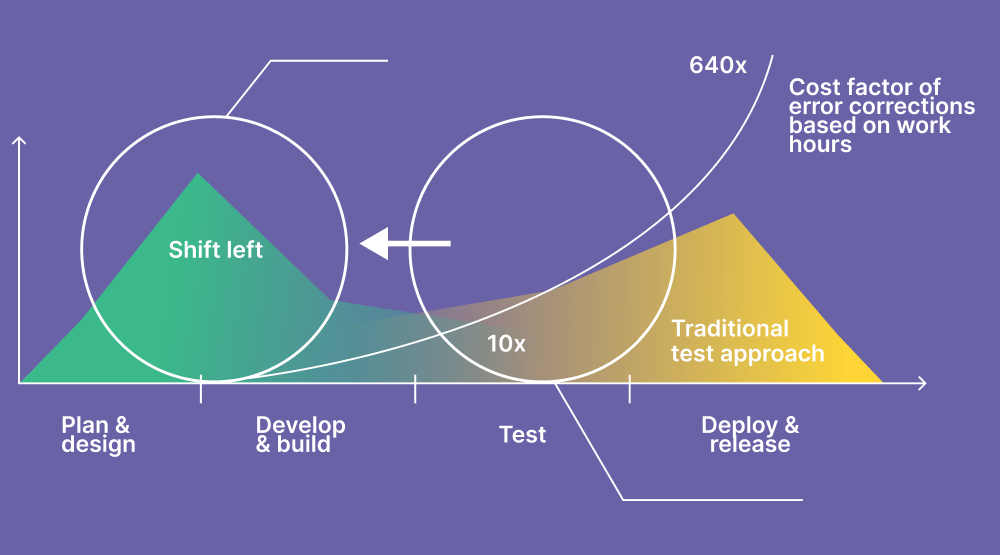
Shift-Left testing approach helps you avoid the negative consequences of delayed testing, such as:
- Insufficient testing resources
- Missed design
- Architectural or requirements flaws
- Complexities in debugging and issue resolution, and
- Project delays.
Four approaches to implementing Shift-Left testing
There are four key strategies used to implement shift-left testing in the earlier phases of the software development lifecycle:
- Model-based Shift-Left testing: Utilizes modeling techniques to predict and mitigate potential issues early in the development process.
- Traditional Shift-Left testing: Integrates standard testing practices earlier in the development timeline.
- Incremental Shift-Left testing: This applies testing incrementally throughout the development phases rather than at the end.
- Agile/DevOps Shift-Left testing: Incorporates testing as a continuous practice in Agile and DevOps methodologies, aligning it closely with ongoing development activities.
2. AI and Machine learning in testing
The evolution of software testing is increasingly intertwined with the advancement of AI and ML technologies, revolutionizing traditional testing methodologies. AI algorithms now have a crucial role in generating test cases, and ML techniques are instrumental in identifying patterns and anomalies in test data. This synergy of AI/ML in automated testing is poised for further growth as businesses strive for faster, more accurate, and streamlined testing processes.
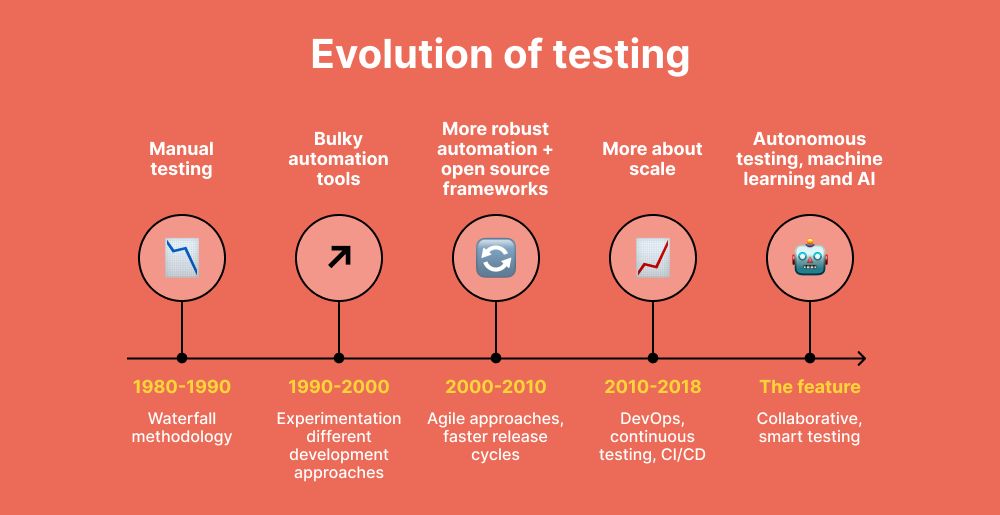
With the ongoing AI revolution, it's no surprise that AI will significantly alter software development and testing. Developers are increasingly turning to tools such as ChatGPT and GitHub Copilot, known for their code generation capabilities. While these tools have certain limitations, such as the need to use them in conjunction with plagiarism checkers they drastically reduce the time and effort required for code writing. Similarly, AI-based testing tools are also emerging, offering benefits such as identifying critical test scenarios, generating and maintaining test cases, and optimizing test suites for comprehensive coverage.
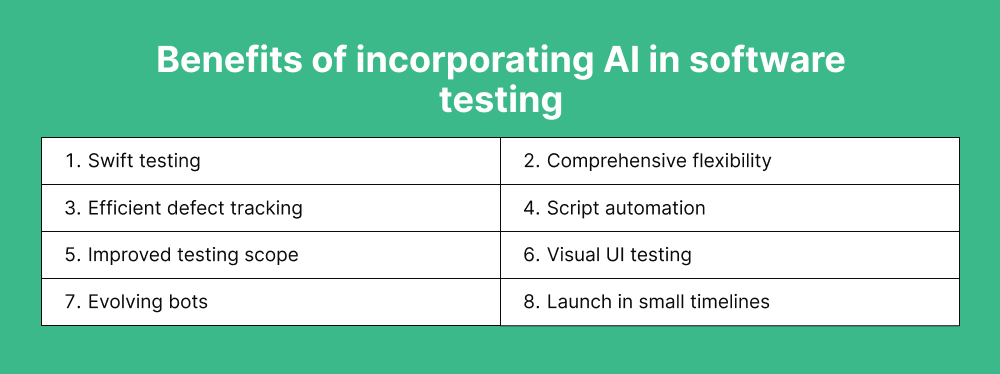
AI software testing – what the future brings
The use of AI in software testing is leading to a significant change. In the near future, AI may be able to create initial code and tests, which will serve as a foundation for developers to build upon and handle more complex tasks. This shift has the potential to increase efficiency and enable developers to concentrate on more creative and valuable aspects of software development.
AI is increasingly being used to write documentation, which is a task that developers usually dislike. With the help of Natural Language Processing and Large Language Models, AI tools can make this process more efficient.
AI is also becoming more involved in ensuring software security and compliance, including threat detection and vulnerability assessment for software applications. As we move forward into 2025, AI in software testing is expected to increase, bringing about unprecedented changes to the industry.
3. Rising significance of QAOps
QAOps, blending Quality Assurance (QA) and IT Operations (Ops), revolutionizes software development by integrating QA into the DevOps cycle. This fusion ensures high-quality software standards, as QA is a vital checkpoint before software release.
Contrasting traditional DevOps, which focuses on uniting software development and IT operations, QAOps fosters closer collaboration between QA engineers and developers throughout the development process. This approach embeds quality considerations from the start rather than treating them as a later addition.
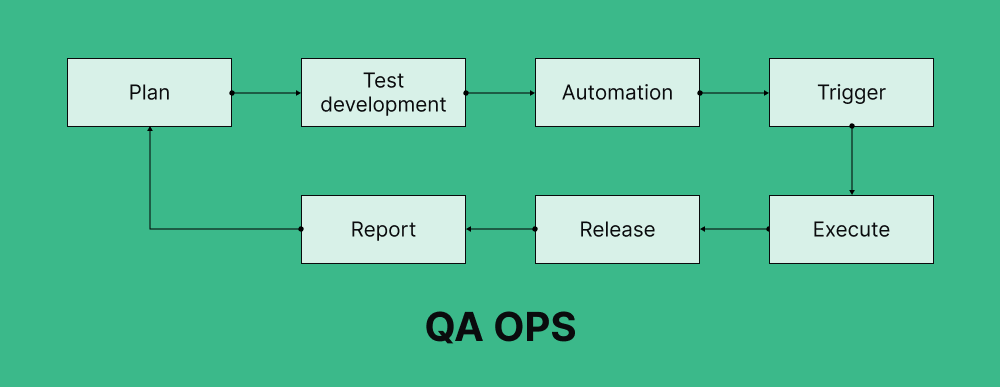
The emergence of QAOps represents a new software process model that aims to improve both quality and efficiency. This model brings engineers, functional teams, and testers together, emphasizing quick, effective communication and collaboration. The outcome is better products, faster delivery, and the development of advanced features.
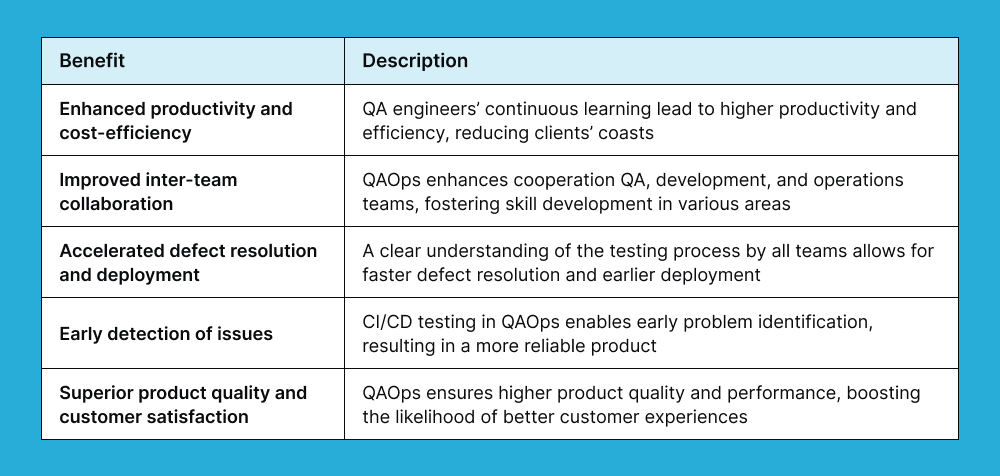
In essence, QAOps is a strategic evolution in software development, prioritizing quality at every step and promising a more integrated and efficient development lifecycle.
4. Crowdtesting
Crowdtesting is a method that involves a large group of testers who are not part of the company's internal QA team. These testers have unique skills and access to various devices. Organizations can engage with these testers through crowdsourcing platforms where they can submit their software or applications for testing. This process helps companies to complete their test cycles quickly. The significant benefits of using crowdtesting include:
Complementing in-house testing, crowdtesting offers effective user acceptance testing, providing real-world usage insights. As more organizations adopt this strategy, the global market for crowdtesting is expected to expand.
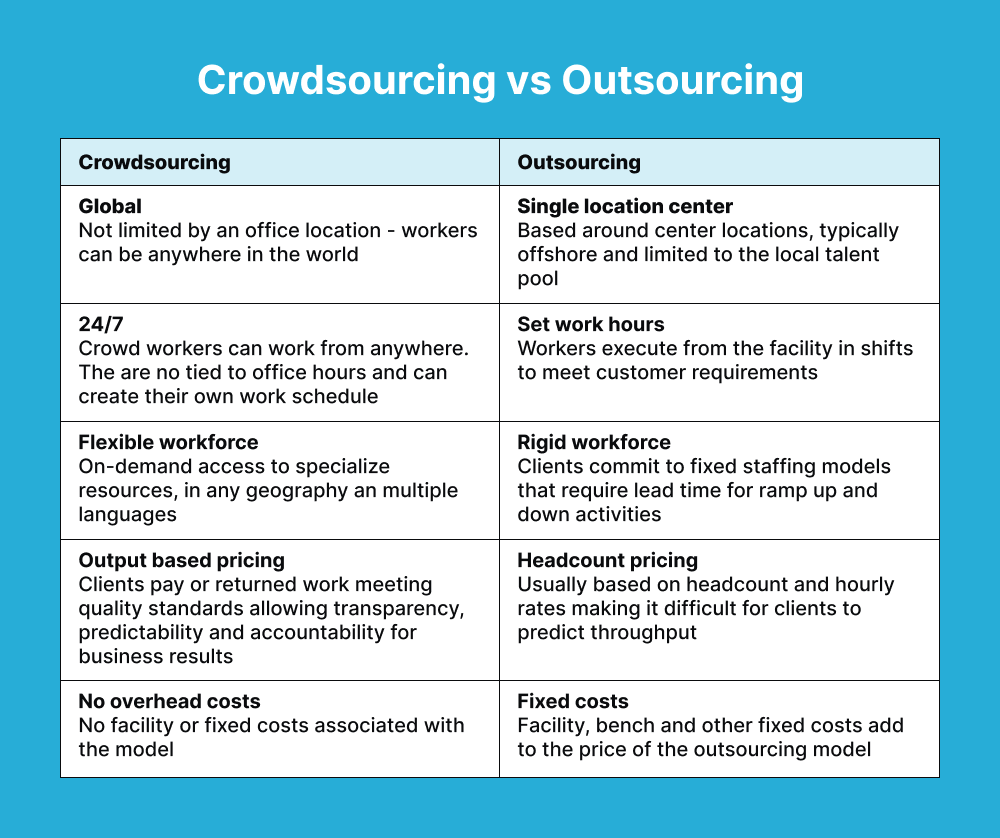
Pro tip
Global App Testing is a specialized company that provides on-demand crowdtesting services. With over 90,000 testers available in more than 190 countries across the globe, you can access a wide range of real-world devices and usage scenarios. Some expected benefits of using GAT's solutions include:
- Scalable testing resources that are available as needed.
- More comprehensive test coverage.
- Quicker feedback loop with end users.
- The influx of specialized expertise and experience.
5. Evolution of test automation: Low-code and No-code approach
The trend of testing earlier in the development process, or "shift-left," is gaining popularity as testing is now being conducted in parallel with development. Low-code and no-code technologies, becoming increasingly popular in software development, are now set to revolutionize the testing domain.
Scriptless test automation enables testing without extensive coding. This evolution transforms a field traditionally reserved for developers, allowing non-technical stakeholders to engage in testing. They can now plan, execute, and analyze tests without the need for complex coding. This approach saves developer hours and broadens productivity across the organization by granting non-technical team members access to customized software solutions.
6. Enhanced focus on Security Testing and DevSecOps
Given the surge in cybersecurity threats and data breach incidents recently making headlines, it's unsurprising that security testing and the emerging field of DevSecOps are poised to dominate the tech landscape in 2025. Integrating security measures right from the initial stages of product design and development, along with continuous security testing, is now essential.
This shift underscores the importance of various security testing methodologies, such as:
- Vulnerability scanning
- Penetration testing
- API testing, and
- Web application security testing.

Many companies opt to use security-as-a-service instead of developing in-house security management and testing capabilities. This is due to a growing focus on security, resilience, and compliance.
This trend is similar to TestOps' testing integration into the DevOps workflow. DevSecOps aims to embed a stronger security focus throughout the software development lifecycle. While DevSecOps is already gaining traction, significant shifts in how organizations approach software and cybersecurity are expected in 2024.
7. IoT (Internet of Things) Testing
The global IoT testing market, valued at over USD 1.89 billion in 2023, is expected to grow at a compound annual growth rate (CAGR) of around 31%, reaching over USD 21.99 billion by 2032. This significant growth reflects the increasing reliance on IoT devices and the need for effective testing to ensure their functionality and security.
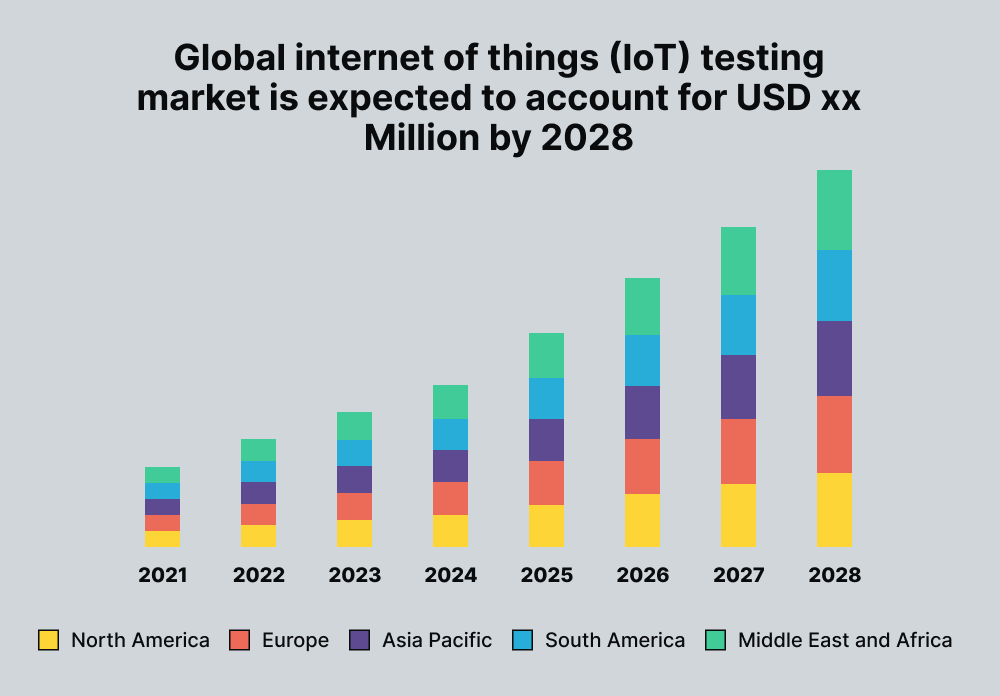
IoT testing focuses on checking the performance of IoT devices and is crucial for enhancing system productivity by preventing unexpected glitches. It provides greater control over devices and helps improve network and device efficiency, accessibility, and usage. In 2024, IoT testing is anticipated to be a significant software testing trend, focusing on ensuring IoT instruments' security, data integrity, performance, scalability, and compatibility.
8. Mobile test automation
With the advancement of mobile technology, the development of mobile applications is rapidly growing. This trend calls for a transformation in testing techniques, especially in mobile test automation. Though mobile test automation plays an essential role in supporting DevOps, it is not being adequately utilized due to a lack of efficient tools and methods.
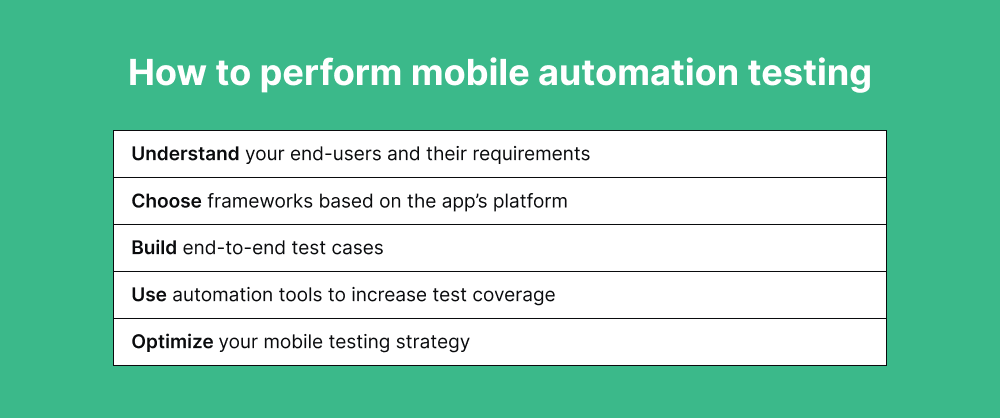
The increasing complexity and number of mobile applications demand a shift towards more advanced mobile test automation. This need is driven by the pressure to reduce time-to-market and to cope with the rapidly expanding mobile technology landscape.
Integrating cloud-based mobile labs and test automation tools represents a promising development, potentially elevating mobile test automation to new heights. As the industry matures, overcoming these challenges will be essential for fully harnessing the power of mobile test automation in the DevOps ecosystem.
9. API Test Automation
The rise of microservices architectures has significantly increased the number of Application Programming Interfaces (APIs), making API-driven development more relevant than ever. However, using APIs comes with the risk of security breaches involving sensitive data. API testing is a more efficient alternative to extensive GUI testing in Agile or DevOps environments, where speed is crucial.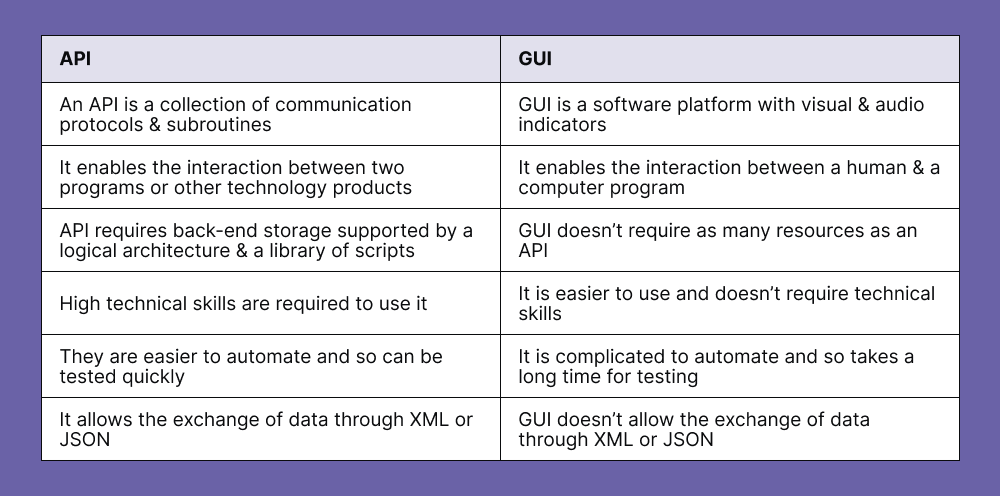
In order to meet the increasing requirements of API testing, it is important to embrace more powerful automation techniques. This includes various types of testing, such as:
- Interoperability
- Smoke testing
- Runtime error detection
- Penetration and security testing, as well as
- Basic unit testing.
Automation is the solution for achieving higher efficiency, enabling more tests to be performed in a shorter time and, ideally, at a lower cost. Moreover, automating the recurring execution of API tests, whether at specified intervals or designated stages in the CI/CD pipeline, is increasingly becoming the standard practice. This approach streamlines the testing process while also ensuring consistency and reliability in API performance across different stages of development.
10. Focus on accessibility testing
In the era of stringent web and mobile accessibility regulations, ensuring compliance through accessibility testing has become a critical component of software development. To sidestep legal challenges and bolster their brand image, organizations are focusing on aligning their applications with accessibility standards such as the Americans with Disabilities Act (ADA), Section 508, and the Web Content Accessibility Guidelines (WCAG) 2.1.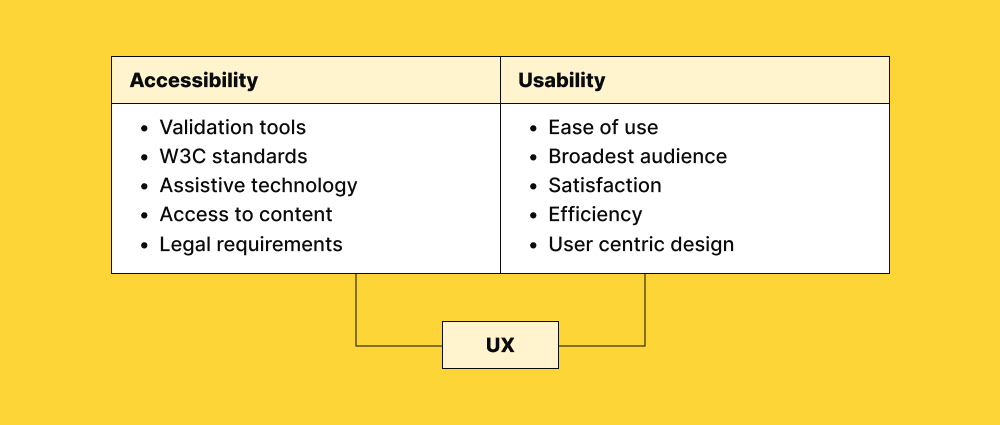
Incorporating automation and AI in testing can efficiently handle the repetitive aspects, especially when testing functionalities like screen readers, magnifiers, and captions. Additionally, crowdtesting offers valuable perspectives from users with disabilities. For global applications, refining accessibility testing practices is essential to bridge compliance gaps and cater to a diverse user base.
Pro tip
Benefits of implementing Accessibility Testing:
- Compliance with disability access standards: Ensures that products meet legal and regulatory standards for accessibility, maintaining compliance.
- Improved usability for impaired users: Enhances the experience for visual, auditory, or motor disabilities, making products more user-friendly.
- Legal risk reduction: Helps avoid legal issues associated with failing to meet accessibility standards.
- Broader user accessibility: Makes products more accessible to a diverse range of users by eliminating barriers to access.
- Enhanced brand reputation: Bolsters the organization's image as inclusive and sensitive to the needs of all users.
Wrapping it up
Embracing the latest developments in software testing, including integrating innovative technologies, is key for teams to ensure their testing strategies are in sync with the dynamic nature of software development. Organizations that prioritize these software testing trends in 2025 will be able to deliver high-quality software with enhanced performance, setting new standards in the tech industry.
How can Global App Testing help?
Global App Testing successfully addresses the diverse challenges of software testing. With more than 90,000 testers worldwide, we offer insights into how apps perform in various markets and for different user groups. This approach is key to detecting localization issues and ensuring that applications are compatible and well-received globally.
Are you interested in enhancing your software's global appeal?
Incorporate Global App Testing into your development process for better market adaptation and customer satisfaction, and schedule a call today!
We can help you simplify your testing process while keeping it aligned with your business goals
FAQ
What is shift-left testing?
Shift-left testing is an approach where testing is performed earlier in the software development process. The idea is to identify and fix issues sooner, reducing costs and time to market.
Why is security testing becoming more important?
With the increase in cyber threats and data breaches, security testing is vital to identify vulnerabilities early and ensure the software is secure from attacks.
What is the significance of API test automation?
With microservices and cloud applications becoming more prevalent, API testing is crucial for ensuring these interconnected systems work seamlessly and securely.
How does mobile test automation fit into current software testing trends?
Mobile test automation addresses the need to efficiently test applications across various mobile devices and platforms, ensuring quality and performance.
What is the role of accessibility testing in software development?
Accessibility testing ensures that applications are usable by people with disabilities, comply with legal standards, and improve user experience for a broader audience.
Keep learning
10 Regression testing tools to consider in 2025
Web app testing - everything you need to know
10 QA mobile testing types you need to know about

